Michel Goldberg1*
1Department of Oral Biology, Faculty of Fundamental and Biomedical Sciences, INSERM UMR-S 1124 Paris Cite University, France
*Corresponding Author: Michel Goldberg, Department of Oral Biology, Faculty of Fundamental and Biomedical Sciences, INSERM UMR-S 1124 Paris Cite University, France; Email: mgoldod@gmail.com
Published Date: 24-10-2022
Copyright© 2022 by Goldberg M. All rights reserved. This is an open access article distributed under the terms of the Creative Commons Attribution License, which permits unrestricted use, distribution, and reproduction in any medium, provided the original author and source are credited.
Abstract
The formation of the tooth crown implies dentin and pulp construction (including mantle dentin, odontoblasts, Höhl cells, and vascular, axons and pulp cells). The root formation involves acellular and cellular cementum, peripheral and central dentins. Vascular cells and nerves are located in the central part of the root, whereas the superficial layer (Hopewell-Smith and Tomes granular layers) are located at the periphery. In the central part of the pulp, fibroblasts and immunocompetent cells are identified as T-lymphocytes, B-lymphocytes, dendritic cells, NK cells. In human deciduous teeth, HLA-DR+, CD68+, and factor XIIIa are present, whereas T and B-lymphocytes form clusters. The Hertwig’s Epithelial Enamel Epithelium (HERS’s) is formed by two layers. The HERS’s cells dissociate, and cells, taking origin from the dental follicular sac and from the papilla, migrates. The OEE becomes periodontal ligament cells whereas the IEE becomes cementoblasts. The interconversion of epithelial cells into mesenchymal cells seems to be a crucial event in tooth root formation. Tooth eruption is associated to root lengthening. The temporary tooth is gradually destroyed (root cementoclasts), whereas the permanent coronal part of the tooth erupts and acquire it final shape and position.
Keywords
Tooth Root Formation; Hertwig’s Epithelial Root Sheath; Hopewell -Smith Layer; Tomes’granular Layer; Periodontal Ligament; Acellular Cementum; Cellular Cementum; Eruption
Tooth Root Development
The Inner Enamel Epithelium (IEE) and Outer Enamel Epithelium (OEE) connect at the cervix. This structure is named Hertwig’s Epithelial Root Sheath (HERS). Laminin Beta-3 and syndecan-1 are expressed in the HERS.
Tooth root formation occurs in parallel with eruption. Tooth development is initiated becoming the dental lamina. The mesenchyme condenses around the epithelial tooth bud. The epithelium differentiates into ameloblasts and the mesenchyme into odontoblasts.
The two cell layers of the Hertwig’s enamel epithelium play role in root morphogenesis:
The OEE is formed by a layer of cuboidal cells (rectangular) located in a developing tooth. The Iroquois genes (Irx) regulate the cell proliferation. Irx1 is specifically expressed in the OEE, Stellate Reticulum (SR) and Stratum Intermedium (SI) layers of the developing tooth. Irx1 mediates dental epithelial cell differentiation in the lower incisors resulting in delayed growth of the lower incisors. Irx1 is specifically and temporally expressed during developmental stages of lung and dental development. Irx1+ cells are unique to the development of the incisor outer enamel epithelium patterning of Lef-1+ and Sox2+ cells [1]. Sox9 becomes restricted to the Outer Root Sheath (ORS). Sox9 expression depends on sonic hedgehog (Shh) signaling and demonstrate overexpression in skin tumors in mouse and man. Intercellular junctions, such as desmosome-like junctions, gap and tight junctions, are destroyed and between the dissociated OEE, cells issued from the follicular sac slide and penetrate into the oral epithelium where they underwent alveolar ligament cells.
The IEE is a layer of columnar square cells. The IEE differentiate into pre-odontoblasts and odontoblasts. Gap junctions appear within the HERS -derived Malassez epithelium. Thereafter these cells differentiate into cementoblasts. The cell number of IEE was greater than that of OEE. It will give rise to ameloblasts. VEGF and its receptor (VEGFR-2) are seen among the inner enamel epithelium cells. They differentiate into ameloblasts responsible for secretion of the coronal enamel during tooth development.
The main tissues that contribute to root formation are the epithelial cell rests of Malassez, derived from the fragmentation of HERS during tooth root formation. Three stages are recognized: -during Stage 1, with an intact epithelial sheath. In stage 2, the epithelial sheath becomes fragmented and in section 3, the beginning of initial cementogenesis was observed.
Following crown formation, the HERS guides root formation. The HERS develop tongue-shaped epithelial protrusion that form a furcation, where the root becomes divided into two-rooted lower molars and three-rooted upper molars (Fig. 1-6). The HSRS orchestrate the root formation. The first formed part of the root sheath bends to form a disk-like structure. The rim of this disk is called the epithelial diaphragm, enclosing the primary apical foramen.
Tgf β/Bmp, Wnt, Fgf and Shh pathways work together with multiple transcription factors Nfic to mediate tissue-tissue interactions that guide root development. Sox2, expressed in the dental lamina gives rise to successional tooth and it is a marker for epithelial competence to generate teeth in mammal.
Nfic, is a transcriptional factor, controlling root but not crown dentin. Short Root Anomaly (SRA) organize root formation. Osterix (Osx) is the key downstream molecule of Nfic. In summary, as the key downstream molecule of Nfic, Osx functions is to promote odontoblast differentiation in root elongation, but it is not implicated in the crown formation [2].
According to Kim, et al., (2013), β-catenin is required for tooth root formation. The results of the present study further imply that Wnt/β-catenin signaling in the dental mesenchyme is required to differentiate odontoblasts for root formation. Odontoblast β-catenin regulates fenestration of mouse Hertwig’s epithelial root sheath. Fragmentation or fenestration of Hertwig are at the origin of root formation. Alkaline phosphatase is also expressed, but not Phex nor DSPP.
The successive events (bud, cap and bell stages) contribute to crown and root formation.
Epithelial Root Sheath (HERS)
Developmental analysis allows to document the inception and collapse into the rests of HERS. The morphological disintegration of HERS begins with the dissociation of the outer basement membrane of HERS. Several investigators have demonstrated keratin expression by HERS.
Specifically, the basal keratinocyte marker Keratin 14 has been documented in the epithelial rests of Malassez using immunohistochemistry and monoclonal antibodies. The Keratin 14 transgene is a highly specific marker gene for cells of Hertwig’s Epithelial Root Sheath (HERS) and Epithelial Rests of Malassez (ERM). Subsequent stages at two and four weeks postnatal revealed the fenestration of HERS into a network of HERS cells.
Neither Runx2 nor osterix were seen in cementocytes. These results suggest that both Runx2 and osterix are important for the differentiation into cementoblasts. Additionally, osterix may be indispensable for the transcription of osteopontin expression.
Then OEE and IEE undergo rapid mitotic division and grow deep into the underlying connective tissue.
Fragmentation
Epithelial rests of Malassez (ERM°: Epithelial Cell Rests of Malassez). Expressed T beta 10: The stage-specific temporal and spatial expression pattern of T beta10 (thymosin beta 10) in the developing tooth germ is indicative of multiple functions of T beta10 in the developmental course from initiation to root formation of the tooth germ.
HERS showed intense staining for heparanase as root formation progressed. In contrast, labeling for perlecan disappeared from the basement membrane facing the dental follicle.Weak immunoreactivity was detected for perlecan on the inner side of the basement membrane of HERS [3].
Insulin-like Growth Factor stimulate the disintegration of Hertwig’s epithelial root sheath. One possibility is that HERS cells become cementoblasts by epithelial-mesenchymal transformation (by phenotypic conversion- Bosshardt and Nanci) along with Runx2, osterisk, osteopontin, and a-SMA [4,5].
In the rat molar tooth, the production of typical cementum proteins may start before the epithelial cells switch to a mesenchymal phenotype, and therefore epithelial cells are still associated with the first matrix deposited on dentin. Epithelial-mesenchymal transformation could also explain the apparent disappearance of the majority of HERS cells. Because there is no evidence for cell death in HERS during early root formation, the inconsistency in cell number could reflect a phenotypic conversion.
Tooth Root Formation
The fate of the epithelial root sheath is presented with emphasis placed upon the possible roles of apoptosis and epithelium-mesenchymal transition [6]. Epithelial Root Sheath (ERS) pays a significant role in root dentinogenesis and also in cementogenesis. ERS migrate into the periodontal ligament where they re-associate. Apoptosis seems to be an important event, and decrease with age. Another important event is the Epithelium-Mesenchymal Transition (EMT). Expression of vimentin (instead of keratin) is expressing a mesenchymal phenotype. There is a switch from keratin to vimentin expression [7].
Eruption
Pre-eruptive phase: starts before the tooth germ begin to erupt.
Eruptive phase: starts with initiation of root formation. The tooth moves from its position within bone occlusion. The tooth has both an intraosseous and extraosseous compartments including: the formation of the root, the periodontal ligament, and the dento-gingival junction.
Post-eruptive phase: Maintaining the erupted tooth in occlusion while the jaws are continuously growing and compensate for occlusal and proximal wear: EGF, TGFa, Colony stimulating factor 1 contribute to tooth eruption.

Figure 1: Formation of a mandibular molar.

Figure 2: Formation of a maxillary molar.

Figure 3: Root length tooth eruption.

Figure 4: The gubernacular canal containing remnant of the dental lamina facilitate the tooth eruption.

Figure 5: Root resorption allowing shedding of the primary tooth.

Figure 6: Apical cell formation.
Cultured porcine epithelial rests of Malassez express osteopontin (ERM). Immunopositive staining with OX6 stained small or large, oval or dendritic cells. From Tadokoro, et al., report, it was conclude that: (1) ERM in the furcation area of the rat PDL is intimately associated with non-epithelial, immunocompetent cells; (2) The non-epithelial cells are macrophages and/or dendritic like cells; (3) The presence of vesicular structures indicates a close, functional relationship between the cells of ERM and the immunocompetent, OX 6-immunopositive cells [8-10].

Figure 7: Tooth formation: genes mutations. Genes mutation: Cbfa1/Runx2.

Figure 8: Mutation Cbfa1/Runx2 induce a cleidocranial dysplasia with an increase of supernumerary teeth (hyperdontia ou polydontie).
Conclusion
The formation of the tooth root is related to gene expression, associated with tooth eruption. Initially, the crown cap is formed by four tissues: the outer epithelial layer, the inner epithelial tissue, the stratum intermedium and intermediate stellate reticulum. At the collar level (crown-root junction), the 4 cell layers merge and form a double epithelial layer (OEE and IEE). Cells are linked by epithelial desmosomes, gap and tight junctions. They form a continuous border. Cells penetrate the surface of the forming root after dissociation of the junctions. This allows the formation of empty spaces, that favor epithelial root cells migration and a consequently the phenotype interconversion. These observations strongly suggest that apoptosis, occurs in cells of Hertwig’s (HRS). The results obtained at the onset of acellular and cellular cementum formation, also confirm that some epithelial cells-derived from HR are maintained.
Epithelial (OEE) become alveolar ligament cells, and also for the inner enamel epithelium (IEE) they are differentiatiated into cementocytes. Genes are instrumental in this transformation. Epithelial cells change their phenotype and are genes regulated. Our findings show that programmed cell death, of epithelial cells of HRS and of fibroblast-like cells constitutes an integral part of the developmental process of the tissues of the periodontium [10].
Conflict of Interest
The authors declare no conflict of interest.
References
- Yu W, Li X, Eliason S, Romero-Bustillos M, Ries R, Cao H, Amendt BA. Rx1 regulates dental outer enamel epithelial and lung alveolar type II epithelial differentiation. Dev Biol. 2017;429(1):44-55.
- Wang J, Feng JQ Signaling pathways critical for tooth root formation. J Dent Res. 2017;96(11):1221-6.
- Kim TH, Bae CH, Lee JC, Ko SO,Yang X, jiang R, Cho ES. β-catenin is required in odontoblasts for tooth root formation J Dent Res. 2013;92(3):215-21.
- Hirata A, Nakamura H. Localisation of perlecan and heparanase in Hertwig’s epithelial root sheat during root formation in mouse molars. J Histochem Cytochem. 2006;54(10):1105-13.
- Bosshardt DD, Nanci A. Immunolocalization of epithelial and mesenchymal matrix constituents in association with inner epithelial cells. J Histochem Cytochem. 1998;46,135-42.
- Hirata A, Sugahara T, Nakamura H. Localization of Runx2, Osterix, and osteopontin in tooth root formation in rat molars. J Histochem Cytochem. 2009;57:397-403.
- Kim TH, Bae CH, Lee JC, Kim JE, Ynag X, de Crombrugghe BN, et al. Osterix regulates tooth root formation in a site specific manner. J Dent Res. 2015;94(3):430-8.
- Thomas HF. Root formation. Int J Dev Biol. 1995;39:231-7.
- Tadokoro O, Radunovic V, Inoue K. Epithelial cell rests of Malassez and OX6-immunopositive cells in the periodontal ligament of rat molars: a light and transmission electron microscope study. Anat Rec. 2008;291(3):242-53.
- Cerri P, Freymüller E, Katchburian E. Apoptosis in the early developing periodontium of rat molars. Anat Rec. 2000;258:136-44.
Article Type
Review Article
Publication History
Received Date: 25-09-2022
Accepted Date: 17-10-2022
Published Date: 24-10-2022
Copyright© 2022 by Goldberg M. All rights reserved. This is an open access article distributed under the terms of the Creative Commons Attribution License, which permits unrestricted use, distribution, and reproduction in any medium, provided the original author and source are credited.
Citation: Goldberg M. Tooth Root Formation. J Dental Health Oral Res. 2022;3(3):1-10.
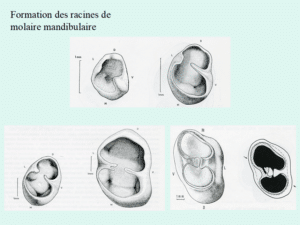
Figure 1: Formation of a mandibular molar.
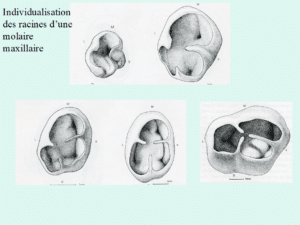
Figure 2: Formation of a maxillary molar.

Figure 3: Root length tooth eruption.
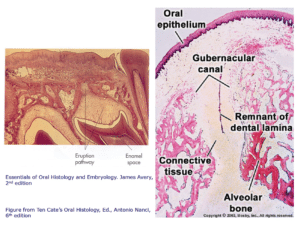
Figure 4: The gubernacular canal containing remnant of the dental lamina facilitate the tooth eruption.
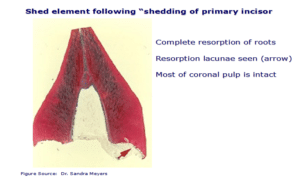
Figure 5: Root resorption allowing shedding of the primary tooth.

Figure 6: Apical cell formation.

Figure 7: Tooth formation: genes mutations. Genes mutation: Cbfa1/Runx2.
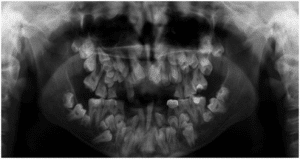
Figure 8: Mutation Cbfa1/Runx2 induce a cleidocranial dysplasia with an increase of supernumerary teeth (hyperdontia ou polydontie).


